LisbonLisboaPortugal.com
The best independent guide to Lisbon
LisbonLisboaPortugal.com
The best independent guide to Lisbon
Lisbon in January: Is it a good month to visit?
January in Lisbon bears little resemblance to the sun-drenched images seen in travel brochures. This month reveals a different city entirely, one where a distinct winter chill settles over the streets, brought in by frequent Atlantic showers. For the prepared traveller, this offers a unique opportunity to explore the city's many fantastic sights in near-perfect solitude.
A visit in January requires a trade-off. The probability of rain is high, and the vibrant energy of the summer months is noticeably absent. The rewards, however, are significant: flights and accommodation are at their lowest prices of the year, restaurants welcome you without reservations, and major attractions can be explored without the throngs of cruise ship tourists.
A successful trip in January hinges on adjusting your expectations and embracing what the season offers, along with flexible plans that can adapt to the whims of the weather. This guide will detail how to make the most of a visit in January, with tips on what to see and do, whatever the weather brings.

The Arco da rua Augusta - Lisbon will have significantly less tourists than in the peak Summer months
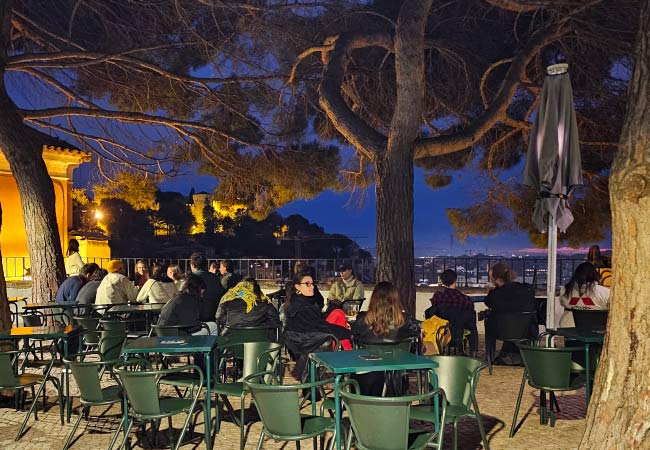
Wrapping up warm to watch the sun set (at 5:45pm) from the Miradouro da Graça
Lisbon Weather in January
January brings true winter weather to Lisbon, marking it as one of the coldest and wettest months of the year.
On average, January sees daytime highs of 15C (59F), which drop to a chilly 8C (46F) at night. You can expect rain on approximately half the days of the month, contributing to a monthly average of 110mm of precipitation. Sunshine is also limited to around five hours per day.
These statistics, however, only provide a partial picture. January's weather often arrives in distinct patterns: a few days of grey, damp conditions can be followed by a spell of clear, bright skies with surprisingly mild temperatures. When the rain does arrive, it often takes the form of a persistent drizzle rather than short, heavy downpours.
The most significant factor for many visitors is the limited daylight. With the sun setting before 6 pm, the shorter days mean less time for outdoor exploration, and frequent cloud cover can make the city feel darker than in the bright spring and summer months.
Insight: Even in its coldest month, Lisbon offers some of the mildest winter weather of any major European city, making it an appealing destination for a winter city break.
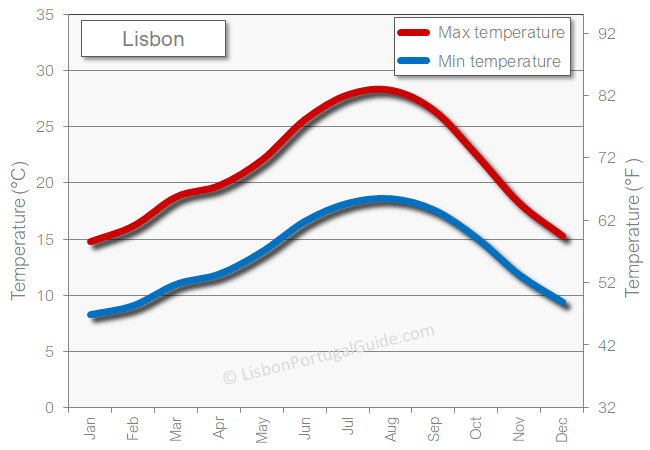
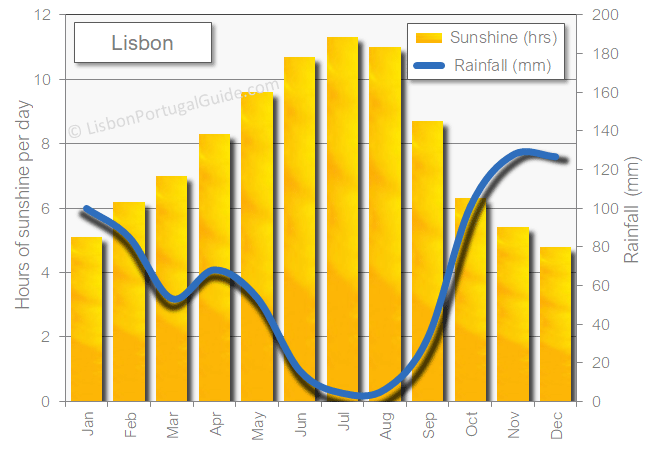
Highlights of Lisbon in January
January might be winter, but Lisbon has plenty to offer, with many sights best enjoyed without the crowds. Here are experiences that work particularly well this time of year:
• Alfama & São Jorge Castle: Climb through the historic labyrinth of Alfama’s streets to the city’s highest point, São Jorge Castle. After exploring the ancient Moorish fortress and its ramparts, descend back through the neighbourhood’s cobbled alleys to discover hidden courtyards and viewpoints. - Alfama guide
• Jerónimos Monastery: A masterpiece of Manueline architecture, this UNESCO World Heritage site is a monument to Portugal’s Age of Discovery. Its highlight is the two-story cloister, where every column is intricately carved with maritime and royal motifs - Jerónimos Monastery guide.
• Fado Performance: Experience the powerful and melancholic sound of Portugal's traditional music. The reflective atmosphere of a winter evening is the perfect backdrop for Fado, best enjoyed in a small, traditional Fado house in the historic Bairro Alto district, where soulful vocals bring the genre to life. - Fado guide.
• LX Factory: A former 19th-century industrial complex transformed into a vibrant creative hub. Explore its independent boutiques and concept restaurants, and be sure to visit the monumental Ler Devagar bookstore, built within a former printing press.
• Museu Calouste Gulbenkian: This celebrated museum houses a remarkable private collection that spans 5,000 years of art. Journey from ancient Egyptian artefacts to masterpieces by Rembrandt, Monet, and René Lalique, all displayed in an award-winning modernist building.
• Oceanário de Lisboa: A world-class aquarium renowned for its innovative design. The main attraction is an enormous five-million-litre central tank that creates the illusion of a single global ocean, home to sharks, rays, and massive sunfish.
• Museu Nacional de Arte Antiga: Dedicate an afternoon to Portugal’s most important public art collection. Housed in a 17th-century palace, its vast collection includes masterpieces of Portuguese painting, such as Nuno Gonçalves's Saint Vincent Panels, as well as significant works by European masters.
• National Tile Museum: Housed in the stunning Madre de Deus Convent, this unique museum is dedicated to the art of the Portuguese azulejo tile. Trace the five-century history of this national art form, culminating in the magnificent panorama of pre-earthquake Lisbon.
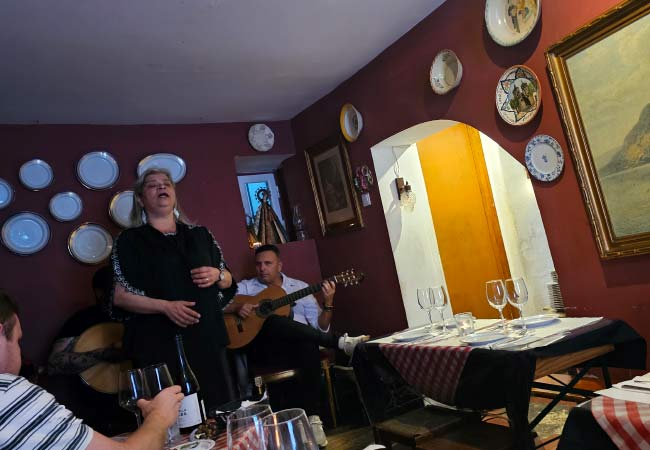
A Fado performance in a tiny restaurant in Bairro Alto
What to do in Lisbon when it rains in January
The cold rain of January offers the perfect excuse to explore Lisbon’s indoor attractions. Many of the city's main highlights, such as the Museu Calouste Gulbenkian and the magnificent Oceanário de Lisboa, are ideal for a wet day. Beyond these, you can discover attractions uniquely suited to the weather.
For a uniquely Portuguese experience, the Museu Nacional do Azulejo reveals the country's beautiful tile-making history in a former convent. The Museu Nacional dos Coches (Coach Museum) presents a spectacular collection of ornate royal carriages.
For a more interactive experience, the immersive Quake museum vividly recreates Lisbon's great earthquake of 1755 through impressive exhibits. You could also spend an afternoon at the LX Factory, a creative hub where former warehouses shelter independent design shops, art galleries, and unique restaurants. Another great option is joining a Portuguese cooking class, where you can learn the secrets behind local dishes or master the art of the perfect pastel de nata.
Shopping provides another excellent escape from the weather. For hundreds of stores under one roof, head to the large Colombo Shopping Centre. For a more traditional experience, explore the elegant boutiques and historic bookshops of the Chiado district. Finally, a wet day is the best time to find a seat on the famous Tram 28, watching the city’s oldest neighbourhoods slide by from the dry comfort of your window.
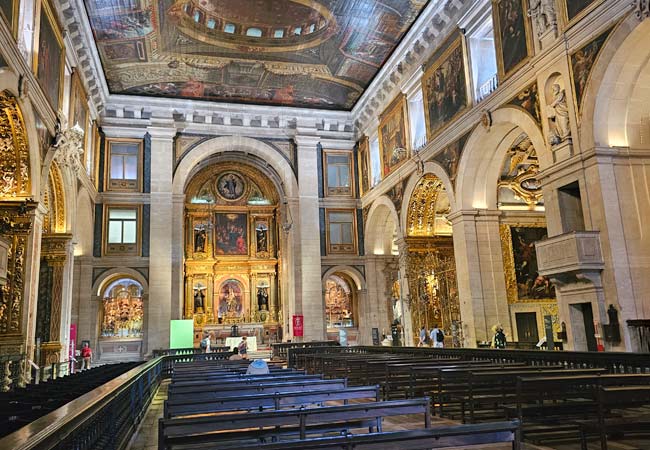
Have you booked your hotel yet?
January offers excellent value for visiting Lisbon, but securing accommodation early ensures you get the best rates and locations.
Use the interactive map below to explore available accommodation across Lisbon's different neighbourhoods. Simply adjust the dates to match your travel plans, and the map will show current availability and pricing for your stay:
Sintra in January
Sintra is Lisbon's most popular day trip, and the majority of visitors arrive with their hearts set on exploring Pena Palace's fairytale towers and Quinta da Regaleira's mystical gardens. However, a visit in January requires careful planning and a dose of realism.
Sintra's location within the Serra de Sintra mountains creates its own distinct microclimate, one that is noticeably cooler, wetter, and mistier than Lisbon. The temperature typically drops several degrees as you climb into the hills, while a persistent fog can shroud the palaces even when the capital is enjoying winter sunshine.
A visit during heavy rain or mist means sacrificing the very things that make Sintra magical. The panoramic views disappear, Pena Palace’s colours become muted and dreary, and the ancient castle ramparts can turn treacherous. A poorly timed visit guarantees a day spent cold and damp, rather than enchanted.
Your success in January is entirely weather-dependent, so check the specific forecast for the Sintra hills before leaving Lisbon. A clear day offers the reward of tourist-free palaces, while a trip in poor weather almost guarantees disappointment.
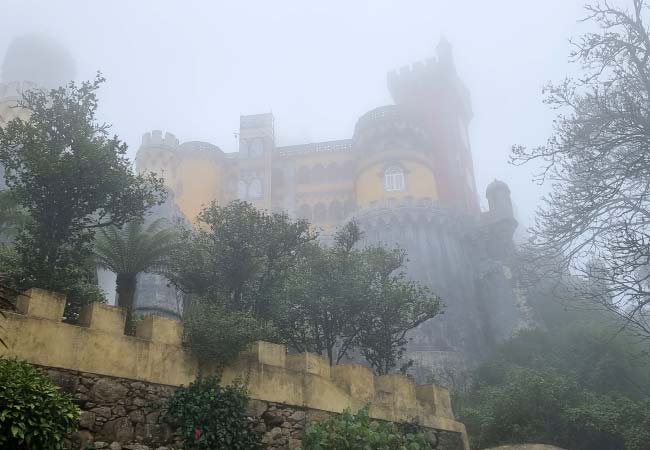
Sintra is often shrouded in fog, which can linger for the majority of the day
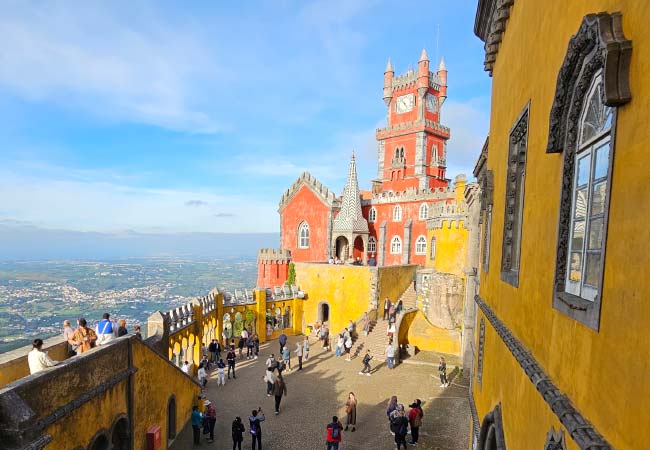
However, on a clear, sunny day, the Pena Palace will be at its quietest for the entire year.
Lisbon in 5 Days: A January Itinerary
Visiting Lisbon in January offers the opportunity to experience the city in its most authentic state, free from the queues and crowds of the high season. The pace is slower, allowing for a more relaxed exploration of its world-class monuments and museums. This itinerary is designed specifically for a winter visit, ensuring each day includes excellent indoor options to complement any outdoor exploration.
Day 1: The Historic Soul of Alfama and Baixa
The first day offers an immersion into Lisbon's oldest districts, presenting a powerful contrast between the winding, medieval alleys of Alfama and the grand, orderly streetscape of Baixa. This is where you can explore the city’s origins and its rebirth.
Dominating the city's skyline, the Castelo de São Jorge is the natural starting point. From its ancient battlements, you are rewarded with commanding panoramic views over Lisbon’s terracotta rooftops and the wide expanse of the Tagus River. A visit in January means the ramparts can be explored at a leisurely pace.
Below the castle walls lies the Alfama district, a labyrinth of narrow cobbled alleys and steep stairways that has retained its historic character for centuries. This is the city's most atmospheric neighbourhood, where you can discover hidden courtyards, traditional Fado houses, and colourful tiled facades. Two of its most important cultural sites provide excellent indoor activities. The fortress-like Sé de Lisboa, the city’s cathedral, offers a look into Lisbon's past with its austere Romanesque interior. Nearby, the Fado Museum is dedicated to the soulful music of Portugal, explaining its history and cultural significance.
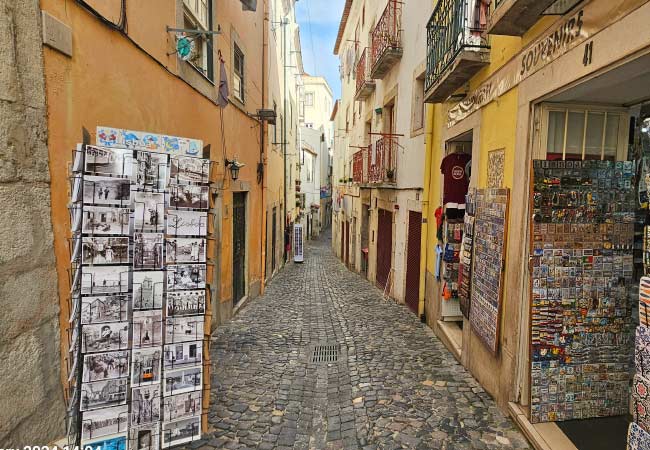
In striking contrast to Alfama’s medieval layout is the Baixa district, Lisbon's neoclassical heart. Completely rebuilt on an orderly grid system following the great earthquake of 1755, its symmetrical streets are lined with elegant Pombaline-style architecture. The area functions as the city's grand downtown, with its main squares, such as the vibrant Praça Dom Pedro IV (better known as Rossio), serving as popular meeting points. Here you can admire the distinctive wave-patterned pavement, grand baroque fountains, and the impressive facade of the National Theatre.
The district's main pedestrian thoroughfare, Rua Augusta, leads south towards the river, passing under a majestic triumphal arch into the immense Praça do Comércio. This vast, arcaded square opens directly onto the Tagus, historically serving as the city’s maritime gateway and a symbol of its commercial power. A visit to the Baixa area is also an opportunity to partake in a cherished local ritual: tasting ginjinha. This traditional sour cherry liqueur is served in tiny, historic bars near Rossio, offering an authentic taste of Lisbon life.
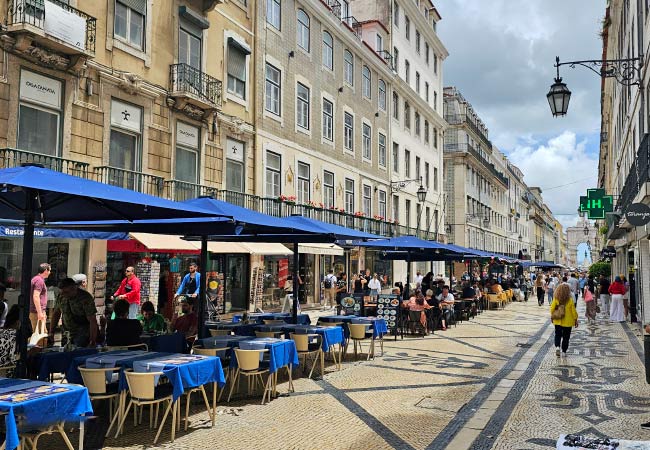
Day 2: Maritime Grandeur and Modern Creativity
The Belém district, situated along the Tagus estuary, is a tribute to Portugal’s Age of Discoveries. This area is home to some of the country's most significant and impressive monuments, all linked to its celebrated maritime history.
The magnificent Mosteiro dos Jerónimos is the area's centerpiece. This UNESCO World Heritage site is an architectural marvel, celebrated for its intricate Manueline-style stone carvings of maritime motifs. The monastery's serene, two-tiered cloisters are especially beautiful and can be fully appreciated without the high-season crowds. No visit to Belém is complete without tasting the original pastel de nata at Pastéis de Belém, the historic bakery that has guarded its secret recipe since 1837.
Along the waterfront stand two iconic structures. The Torre de Belém, an ornate 16th-century fortress, once guarded the entrance to the city's harbour. A short distance away, the Padrão dos Descobrimentos (Monument to the Discoveries) is a striking modern sculpture that celebrates the explorers who led Portugal’s golden age. For those interested in art and history, Belém offers several excellent museums. The Berardo Collection Museum contains a world-class collection of modern and contemporary art, while the National Coach Museum displays an astonishing collection of opulent royal carriages.

In the afternoon, discover a different side of Lisbon at LX Factory. This repurposed 19th-century industrial complex, located in the Alcântara district, has become the city’s primary hub for creativity and innovation. Its sprawling grounds are filled with independent boutiques, artist studios, unique concept stores, and vibrant street art. As evening approaches, LX Factory’s eclectic mix of restaurants and bars makes it an ideal location for dinner, offering a taste of Lisbon's contemporary, bohemian culture.
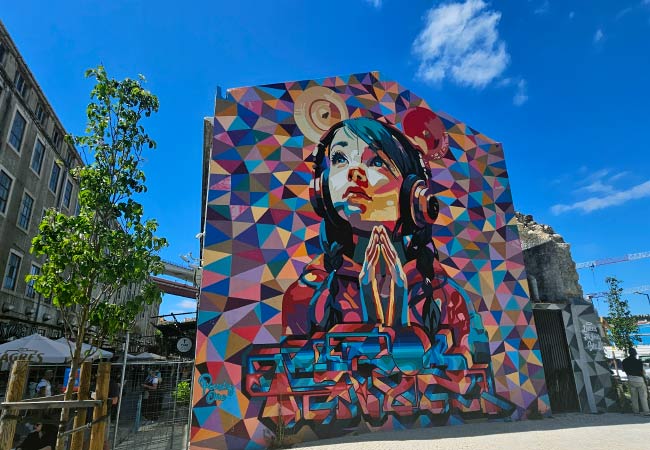
Day 3: Elegant Avenues and Bohemian Heights
This day is dedicated to exploring the stylish and cultural heart of Lisbon, from the established elegance of Chiado to the fashionable streets of Príncipe Real, culminating in the city’s most famous viewpoint and nightlife district.
Chiado is Lisbon's traditional hub for culture and shopping. Its streets are lined with historic bookshops, classic cafés, and international brands. Key cultural landmarks include Livraria Bertrand, recognised as the world’s oldest operating bookshop, and the famous A Brasileira café, once a gathering place for intellectuals and artists like the poet Fernando Pessoa, whose bronze statue sits at a table outside. For a unique perspective on the city, the Elevador de Santa Justa, an industrial-era steel lift, connects the lower Baixa district with Chiado and offers a viewing platform with excellent views over the downtown rooftops.
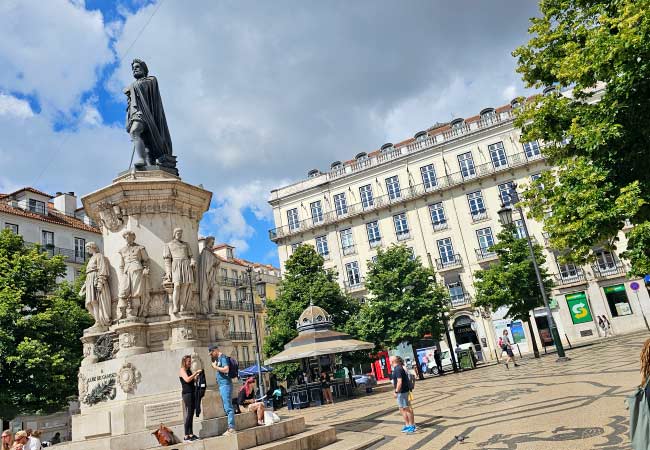
Continuing uphill leads to the more relaxed but equally fashionable neighbourhood of Príncipe Real. This area is known for its beautiful 19th-century mansions, tranquil gardens, concept stores, and antique shops. A highlight is Embaixada, a stunning 19th-century neo-Moorish palace that has been repurposed into a unique shopping gallery. Inside, each of the palace’s grand rooms has been converted into a small, curated boutique, offering Portuguese design and crafts.
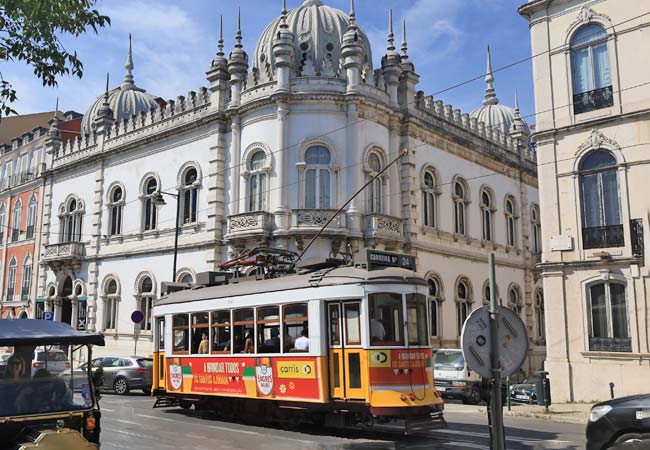
The number 24 tram passing through Príncipe Real
As evening approaches, the Miradouro de São Pedro de Alcântara provides one of the city's most celebrated viewpoints. From its terrace, you can look across the city towards the illuminated Castelo de São Jorge. This viewpoint serves as the perfect entry to the adjacent Bairro Alto district. While relatively quiet during the day, at night its narrow streets transform into Lisbon's premier nightlife hub, where countless small, atmospheric bars open their doors for a pre-dinner drink.
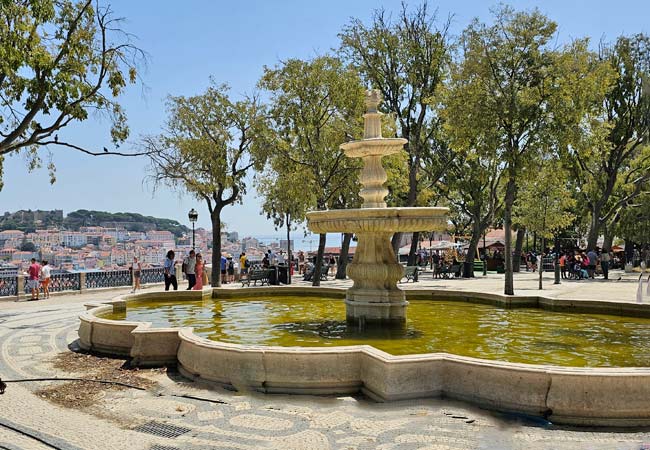
Day 4: The Fairytale Palaces of Sintra
A day trip to Sintra offers an escape to a town of myth and fantasy, set within misty, forested hills just a short train ride from Lisbon. Its collection of whimsical palaces and mysterious estates is unlike anywhere else in Portugal. As much of Sintra’s appeal lies in its gardens and viewpoints, planning this excursion for a day with clear weather will greatly enhance the experience.
Among the most intriguing sites is Quinta da Regaleira, a mysterious estate where the gardens are the main attraction. Full of hidden tunnels, grottoes, and symbolic decorations, its most famous feature is the Initiation Well, a subterranean tower that spirals deep into the earth. In the historic town centre, the Palácio Nacional de Sintra is instantly recognisable by its two large conical chimneys. As the best-preserved medieval royal residence in Portugal, its interior offers a journey through centuries of history, making it a good choice regardless of the weather.
The most famous landmark is the Palácio da Pena. Perched atop the highest peak of the Sintra hills, this fantastical Romanticist palace is a riot of colour, with vibrant yellow, red, and blue terraces. Its eclectic mix of architectural styles and decorative details create a truly fairytale appearance. On a clear day, the views from its balconies stretch all the way to the Atlantic Ocean. To fully appreciate these remarkable sites, it is best to select two or three for a rewarding and unhurried exploration.
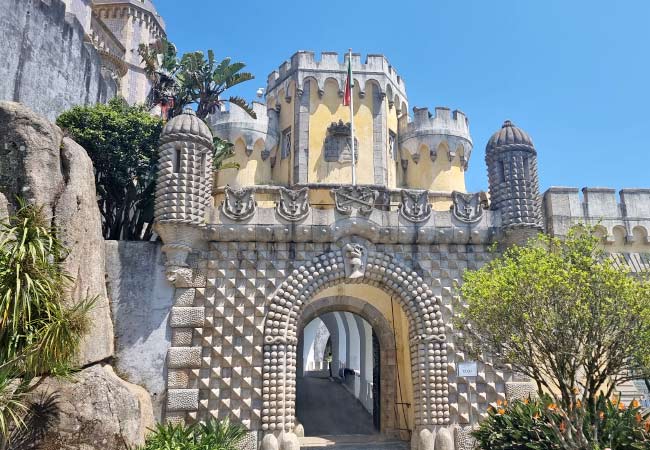
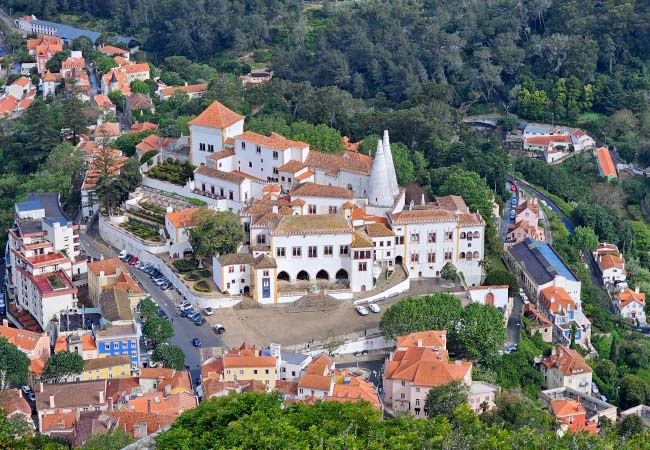
Day 5: Portuguese Tiles and Modern Marvels
The final day explores two distinct facets of Lisbon’s character: its deep-rooted artistic traditions and its ambitious, contemporary vision. The day begins with a unique Portuguese art form and concludes in the city’s futuristic waterfront district.
The morning is ideal for a visit to the Museu Nacional do Azulejo (National Tile Museum). The azulejo, a decorative ceramic tile, adorns countless buildings across Portugal, and this museum celebrates its history. Housed in the beautiful former Madre de Deus Convent, the collection spans five centuries of this unique art form. The building itself is a highlight, particularly its magnificent, gold-laden Baroque chapel.
In the afternoon, the destination is Parque das Nações (Park of Nations). Originally the site of the 1998 World Expo, this area on the Tagus estuary was transformed into a futuristic district of striking modern architecture. Its main attraction is the Oceanário de Lisboa, one of the world's largest and most impressive aquariums. The design is centered around a massive central tank that represents the global ocean, surrounded by four other habitats for different marine ecosystems.
The entire district is an open-air gallery of contemporary design, from the wing-like structure of Santiago Calatrava’s Oriente Station to the remarkable suspended concrete canopy of the Pavilhão de Portugal. Other activities include an aerial ride on the cable car for views along the riverfront or a visit to the Pavilhão do Conhecimento, an interactive science museum. The area's wide selection of restaurants provides a convenient place to enjoy a final dinner before departing.
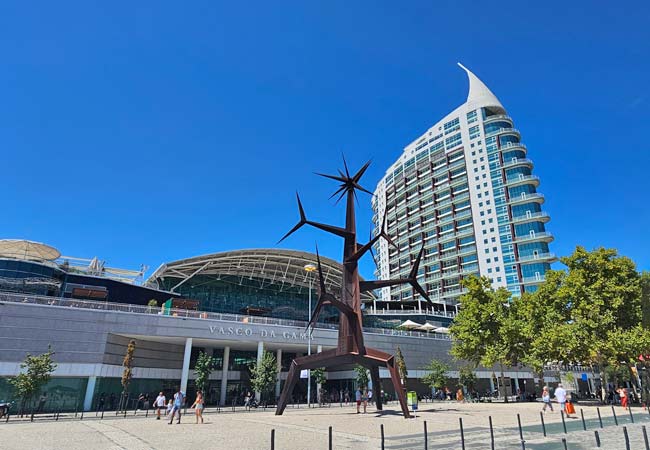
What to Pack for Lisbon in January
January demands versatile clothing for Lisbon's changeable weather, from light layers for sunny spells to warm jumpers for chilly evenings and wet-weather gear for rainy days.
Pack layers you can add or remove easily: several long-sleeved shirts, a warm jumper or fleece, and a few t-shirts for milder moments. Jeans or sturdy trousers work well for January temperatures. Include a waterproof jacket and compact umbrella for the inevitable wet spells.
Footwear matters on Lisbon's cobbled hills. Comfortable walking shoes with good grip handle the varied terrain safely, whether dry or damp. Waterproof options prove worthwhile if you plan extensive exploring.
Evening dress codes remain relaxed year-round, but pack a warm layer for dining out and a scarf for comfortable walks between metro stops and restaurants.
Discover more of Lisbon with our most popular guides
If you've found our content valuable, we'd welcome your support.
The digital publishing landscape has evolved significantly. As a small independent publisher, we face growing challenges. Search engines increasingly favour paid content over organic results, while AI-generated content often reproduces original work without attribution.
To support our work, please consider bookmarking this page (press Ctrl + D) for quick access. If you find an article helpful, we'd be grateful if you'd share it with friends on social media.
For specific questions, please see our Reddit community at r/LisbonPortugalTravel.
Should you notice any outdated or incorrect information, please contact us at [email protected]
Thank you for helping us continue to provide valuable content in an increasingly challenging digital environment.
A complete list of all of our Lisbon articles
If you've found our content valuable, we'd welcome your support.
The digital publishing landscape has evolved significantly. As a small independent publisher, we face growing challenges. Search engines increasingly favour paid content over organic results, while AI-generated content often reproduces original work without attribution.
To support our work, please consider bookmarking this page (press Ctrl + D) for quick access. If you find an article helpful, we'd be grateful if you'd share it with friends on social media.
For specific questions, please see our Reddit community at r/LisbonPortugalTravel.
Should you notice any outdated or incorrect information, please contact us at [email protected]
Thank you for helping us continue to provide valuable content in an increasingly challenging digital environment.



































